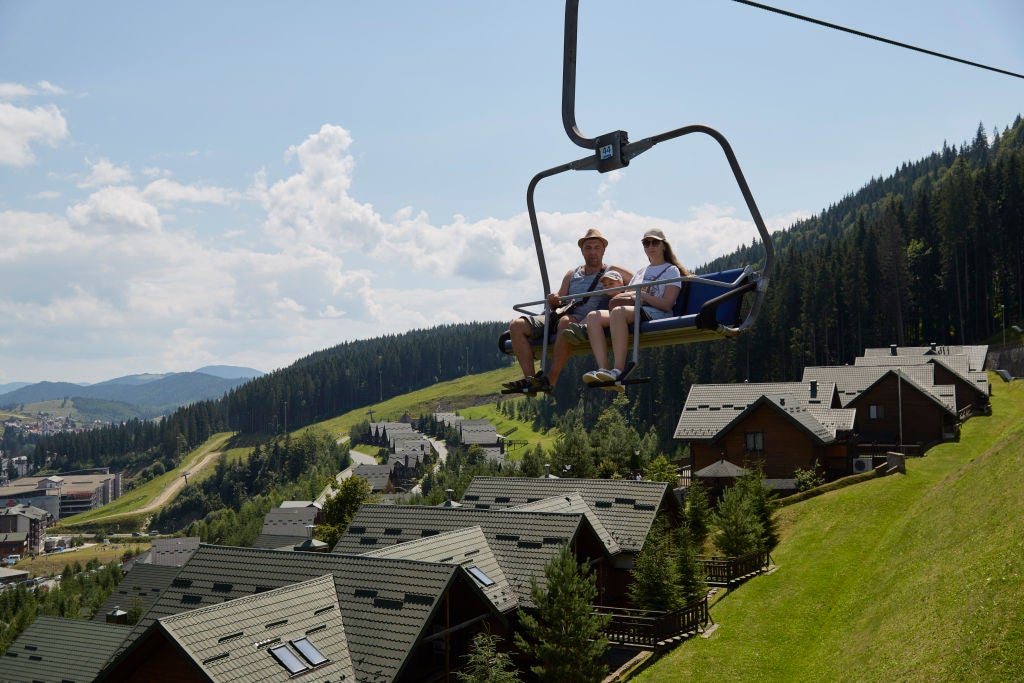
Nothing kills tourism faster than political instability, let alone a full-blown invasion and war from a neighbouring country such as Russia. Ukraine is no stranger to this. In 2014, the country saw a huge drop-off in tourist arrivals after Russia’s 2014 annexation of Crimea. While it has never quite recovered from that, an average of 13 million international tourists a year still made their way to Ukraine in the six years leading up to Covid-19 and the ongoing war.
Today, the country hopes it can leverage the sector as part of a wider reconstruction of the national economy. Although Russia’s war on Ukraine rages on, the invaded country is already planning for the future of its tourism recovery. In fact, this is the main message from Mariana Oleskiv, chairperson at the State Agency for Tourism Development of Ukraine, who recently spoke with Investment Monitor.
“People [associate] war with Ukraine right now,” she says. “It is important to keep also another image of Ukraine: that of a well-developed country with a good infrastructure and with a lot of things to do. We have huge tourism potential and a rich culture and rich history. With the world looking at Ukraine, we want to tell that story now.”
More than just ‘goodwill’ for Ukraine’s tourism industry and investors
Oleskiv understands the enormous perception issue facing Ukraine. As such, her department is already thinking of compelling ways to revive tourism to the country.
“We are now preparing a campaign to attract people to Ukraine after the war,” she says. “We want tourists to support our country by coming here to spend their money. That way they can [directly] support Ukrainians and tell them: thank you for bravely fighting for democracy and stopping the the evil terrorist state of Russia.” She also emphasises, however, that Ukraine is more than a charity case for tourists, or investors for that matter.
“The western part of Ukraine has not been touched much by the war,” adds Oleskiv. “The eastern and southern parts have seen a lot of destruction and, after liberation, they will need new resorts and hotels, especially by the seaside.” The minister’s team has already drawn up plans to revive the whole country’s tourism industry, including that of Crimea, despite it being under Russian control since 2014.
Oleskiv also discusses her vision for Ukraine’s renowned Carpathian Mountains. “Fortunately, this area was not destroyed by war, and we are still working with some investors,” she says. “There will be the big ski resort there, which is still under way, [albeit] a bit delayed by the war, but there will also be investment possibilities for the hotels and other tourism facilities in that area.”
Oleskiv is also particularly intent on rebuilding Ukraine’s significant medical tourism industry, as recently reported on by Investment Monitor.
“Even now, it is possible to attract some of the investors in rehabilitation services like prosthetics,” says Oleskiv. “Unfortunately, Ukraine now has a lot of people wounded by war. People who lost limbs need to learn how to walk again, so there is a lot of [domestic demand] from civilians and soldiers. Sadly, there are wars all the time worldwide. So Ukraine could also become a centre for post-war rehabilitation of people who lost their legs or hands.”
Oleskiv admits, however, that she understands the risks of investing in Ukraine today but encourages investors to look at the country’s high tourism potential. ““[Beyond the economic opportunity], we hope that investors and tourists will support Ukraine’s rebuilding and fight for democratic values,” she concludes.



